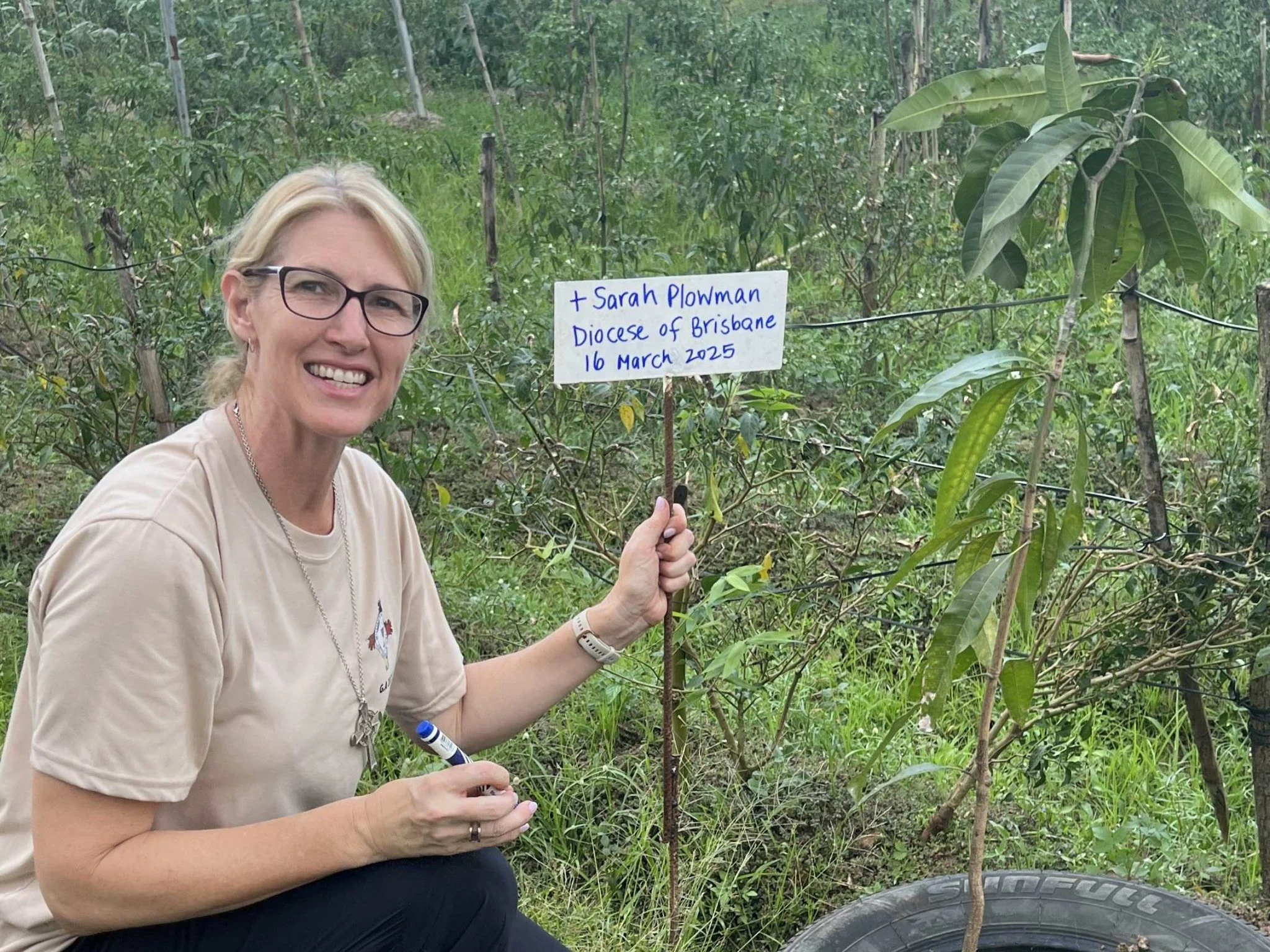Episcopal Church in the Philippines visit: highlights, insights and inspirations
‘Republished with permission from Anglican Focus, Anglican Church Southern Queensland’.
Reflections
“Our recent visit to the Philippines was 10 days of travel, inspiration and joy as we shared fellowship, worship and learning with bishops, clergy in schools and parishes, community co-operative workers and faithful Anglicans in as many settings as we had days on the ground,” says Bishop Sarah Plowman
Over 10 days in March, I had the amazing opportunity to journey through some of the most remote communities in the Philippines, hosted by the Episcopal Church in the Philippines (ECP); their development program, the E-CARE Foundation; and, the Anglican Board of Mission (ABM). Travelling with ABM team member Meagan Schwarz and St John’s Anglican College Chaplain, The Rev’d Juliana Bate and my husband Darius, our purpose was to visit community development projects supported by ABM and E-CARE, as well as Anglican schools in the Dioceses of North Central Philippines, Santiago and North Luzon.
Our recent visit to the Philippines was 10 days of travel, inspiration and joy as we shared fellowship, worship and learning with bishops, clergy in schools and parishes, community co-operative workers and faithful Anglicans in as many settings as we had days on the ground.
We began our visit by attending the installation of the new Prime Bishop of the ECP, The Most Rev’d Nestor Poltic in the Cathedral of St Mary and St John in Quezon City. From Manila, we drove north to Baguio City, where we visited the Cathedral of the Resurrection and Easter Weaving Room Inc, where local women have been creating fabric garments (such as vestments) in the traditional Igorot weaving patterns Indigenous to that region (for hundreds of years) since 1908. Many clergy in the ACSQ will have received stoles from ABM at their ordinations — these are made at Easter Weaving Room. So it was just wonderful for me to see where these beautiful colourful items are made by hand.
Then it was further up into the mountains, to Sagada, where we met with principals and senior leaders from three Anglican schools and saw two other E-CARE development projects. We worshipped with students at St Mary’s School and discussed the challenges and joys of growing strong Anglican schools. From there we headed east through the mountains to Santiago, where we visited St Mark’s Children’s Learning Centre, a project supported by the Archbishop’s ABM November Appeal in 2024. This small school is growing strongly, providing a distinctive Christian education for students in the Anglican tradition. Finally, we visited St Paul’s Memorial School in Balbalasang, a remote community where the Anglican school and parish provide a spiritual home for the people of the village and surrounding area. Being a boarding school, St Paul’s meets the needs of many families looking for a Christian education with all the hallmarks we expect from an Anglican school — strong values, high-quality educational outcomes and a nurturing and loving community centred on Christ.
I got to spend time with four of the ECP Bishops, which was a particular joy for me because they demonstrated their own personality and giftedness in the way they carried out their duties. It seems that playing the guitar is quite common among bishops in the Philippines — good news for Bishop Cam and me — and our final night in Northern Luzon included a singalong where we Australians did not disappoint, but we couldn’t quite match Bishop Hilary’s rendition of “God Must Be a Cowboy”!
There were several things that really stood out to me during our visit.
Wherever we went, every church, school and gathering place proudly displayed the Five Marks of Mission of the Anglican Communion. These have become the ECP’s unifying feature and every person involved in ministry, from community development workers, to finance staff, to clergy and lay leaders was able to refer to them as their guiding framework for ministry and mission. This had a profound effect on me. It seems so simple to be able to articulate a shared understanding about “What are we here for?”, but when I saw it lived as well as spoken and put on the wall, it was clear that this is both a unifying and an energising living missional statement!
The second thing I noticed is the way in which Anglican education is emerging as a new focus for ministry, and women are emerging as key leaders in this mission of the Church — as chaplains and principals. The role of a distinctive school chaplain is a new one in the ECP, as local parish clergy have filled the role in the past. While they were unsure about their understanding and readiness to step into school chaplaincy, these new chaplains are forging ahead with great heart and faithfulness — and their bishops have trusted them with the responsibility of this, showing a great hope and vision for what Anglican school ministry can and should be about.
Thirdly, there is a sense of urgency around creation care. The communities we visited rely on the weather for a successful livelihood and many people spoke of the challenge of changing weather patterns and the increasing frequency of typhoons — up to 25 each season! They see the direct value of utilising solar energy, planting trees and caring for water catchments. E-CARE sees this as one of their key pillars for development and works alongside local communities to support their creation care efforts.
Finally, I noticed that among the ECP communities, there was a great sense of hope and optimism — a spirit of “let’s have a go”, which takes courage and faith in God’s providence. The ECP is a relatively new province. It was admitted as the Mission District of the Philippine Islands by the Episcopal Church in the USA (ECUSA) in 1901. The Church became known as the Philippine Episcopal Church from 1937, before becoming an autonomous church and province of the Anglican Communion in 1990. Through a shared vision and desire to be self-supporting, it intentionally grew beyond needing any financial support from ECUSA. This means that, being only 35 years old in one sense, there is a spirit of “youthful exuberance” where trying new things is necessary and normal, and any failures are seen as learning experiences.
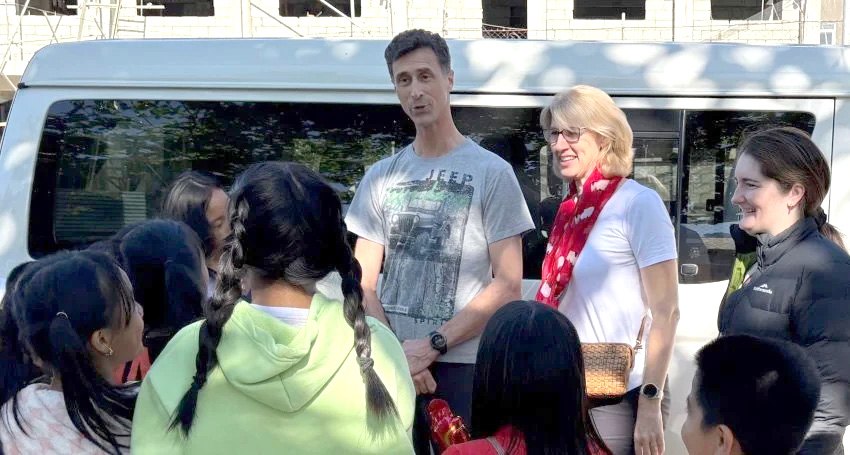
“You’re so tall!” Bishop Sarah Plowman, husband Darius Cartwright, and Rev’d Juliana Bate chat with students at All Saints Mission Incorporated School who are fascinated by Darius’s height! © Anglican Focus.
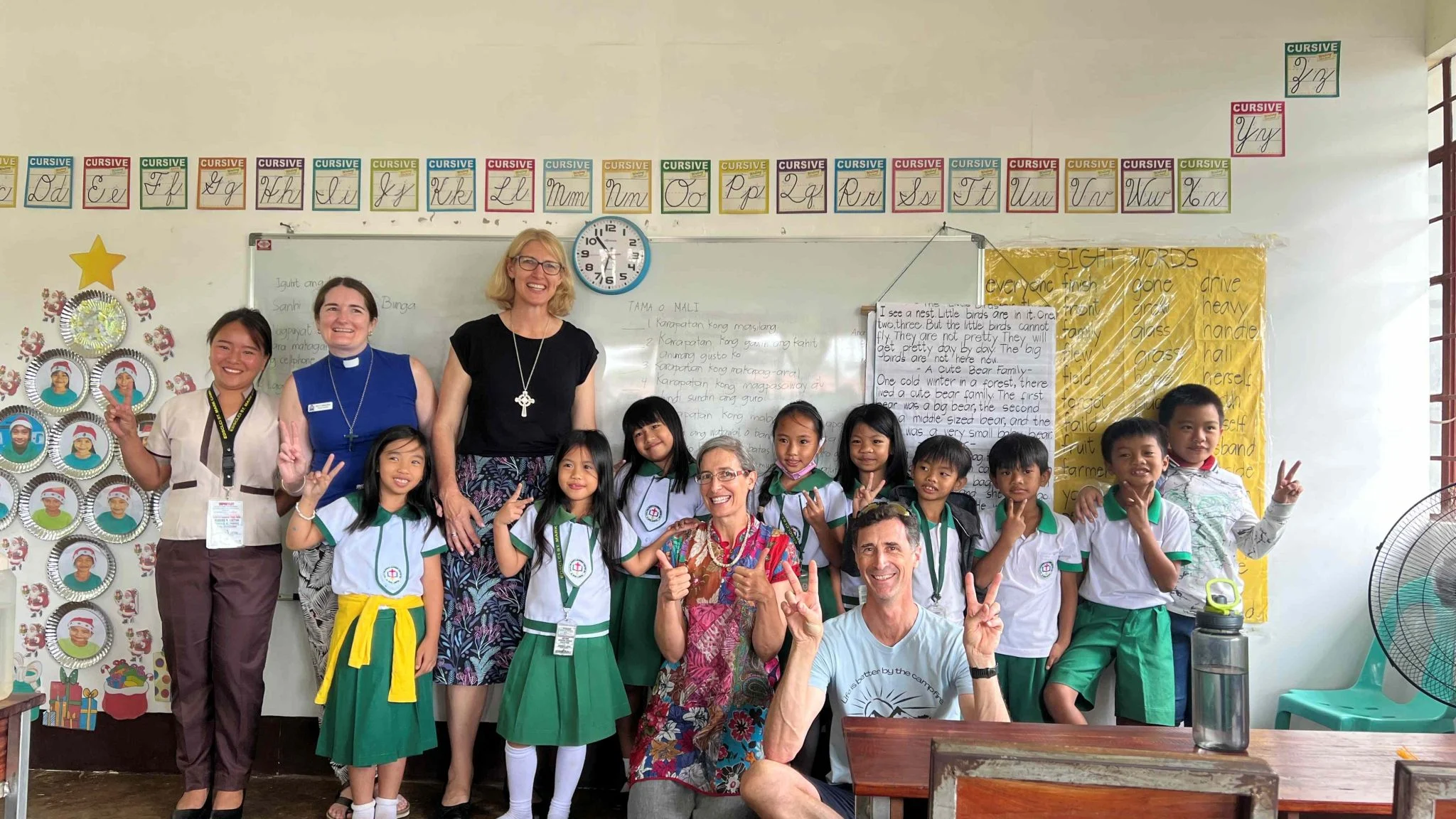
Bishop Sarah, Rev’d Juliana, Darius, and ABM’s Meagan Schwarz visit St Mark’s Children’s Learning Centre in Santiago, where the 2024 Archbishop’s ABM November Appeal is helping build new classrooms © Anglican Focus.
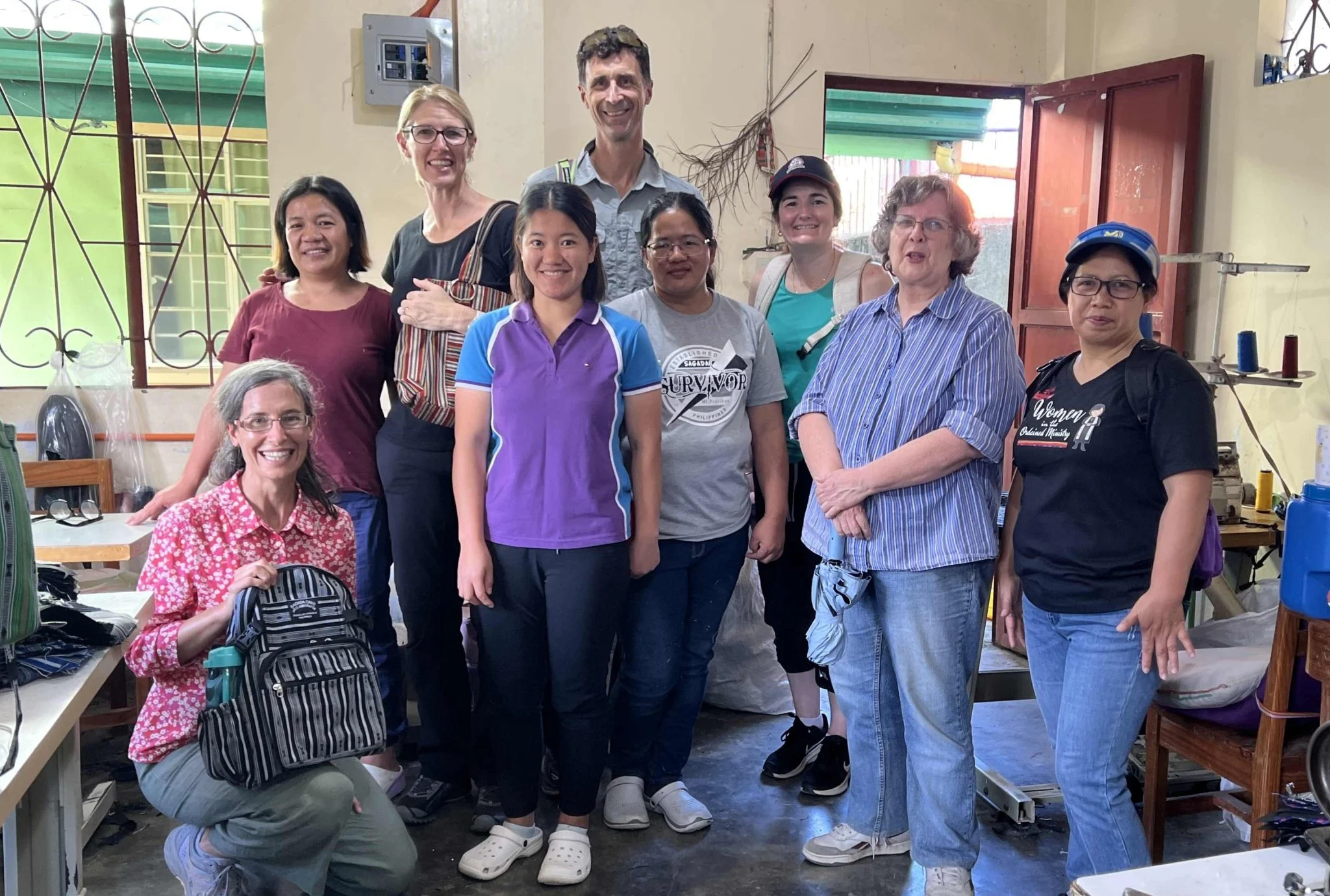
In Sagada, a local co-operative creates bags from local Igorot weaving. This parish activity provides employment for local young women (pictured) and supports parish life © Anglican Focus.
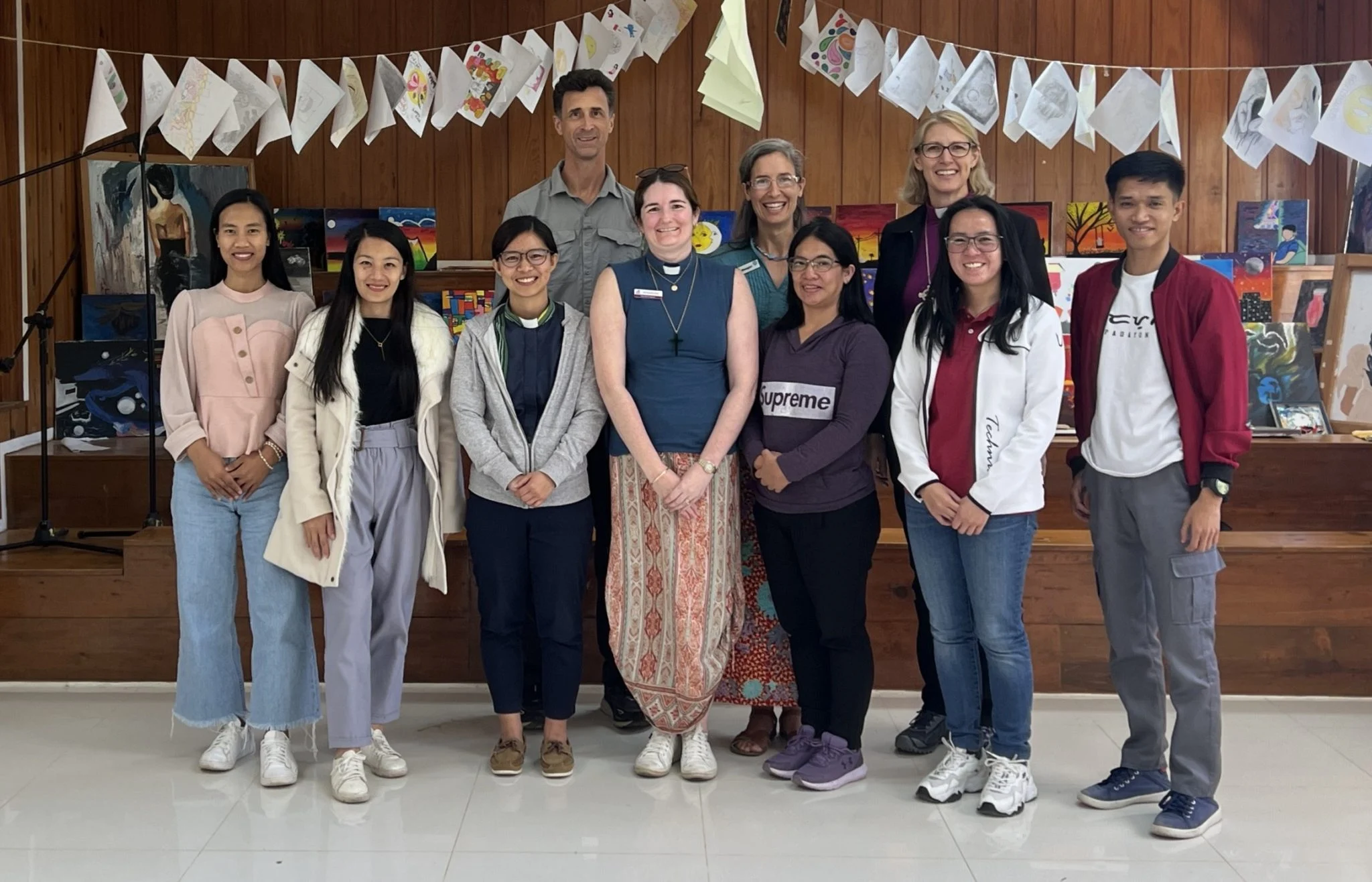
A group of senior leaders from local Anglican Schools – St Mary’s School of Sagada, All Saints Mission School in Bontoc, and St James High School, Besao – met with our visitors to share ideas and wisdom © Anglican Focus.
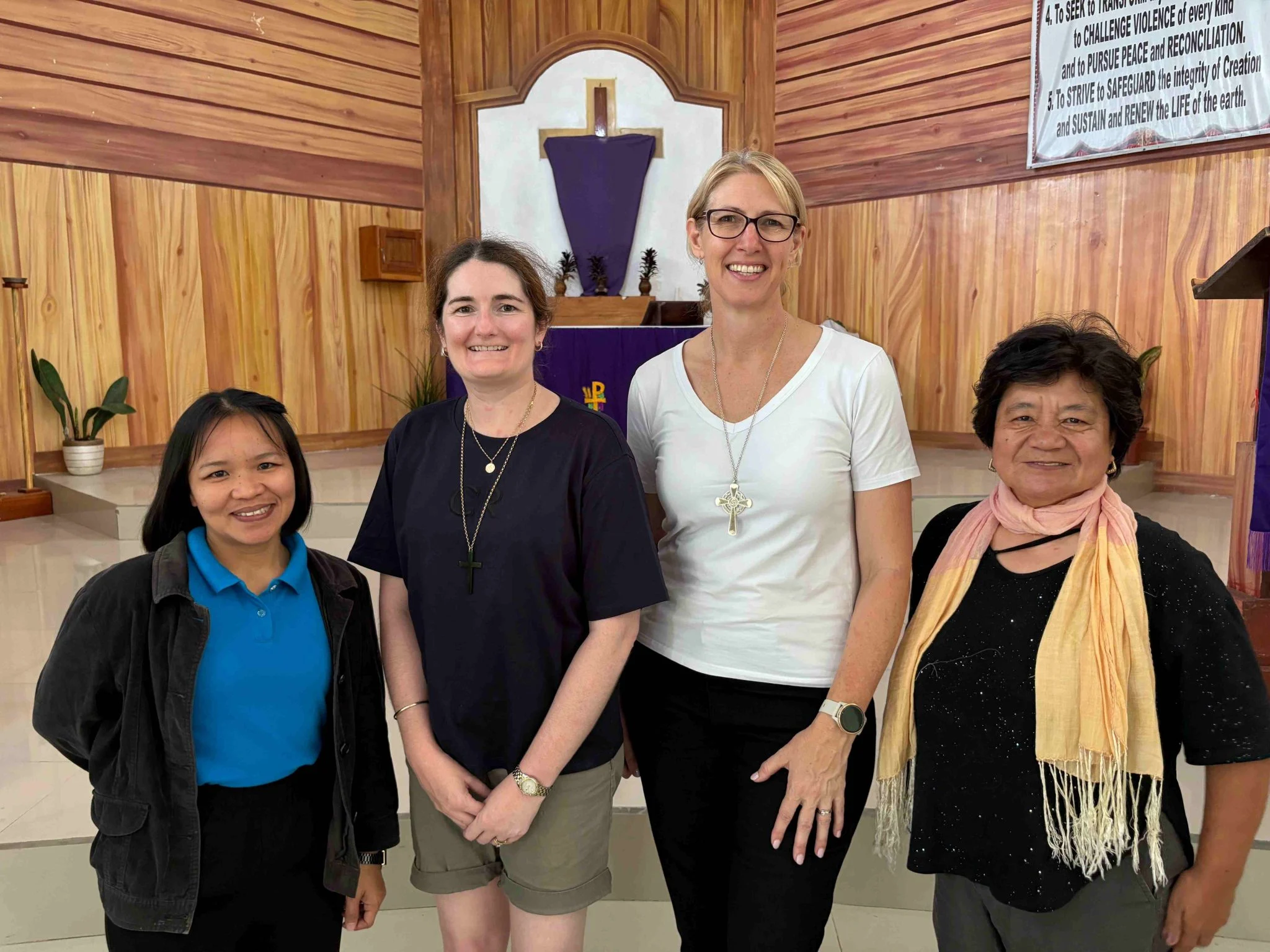
A gathering of Chaplains: Chaplain Karen, Rev’d Juliana, Bishop Sarah and Rev’d Elizabeth shared fellowship and support at St Paul’s High School at Balbalasang. Rev’d Elizabeth is the parish priest of the local area (although ostensibly “retired”!) and Chaplain Karen is the new chaplain of the school © Anglican Focus.
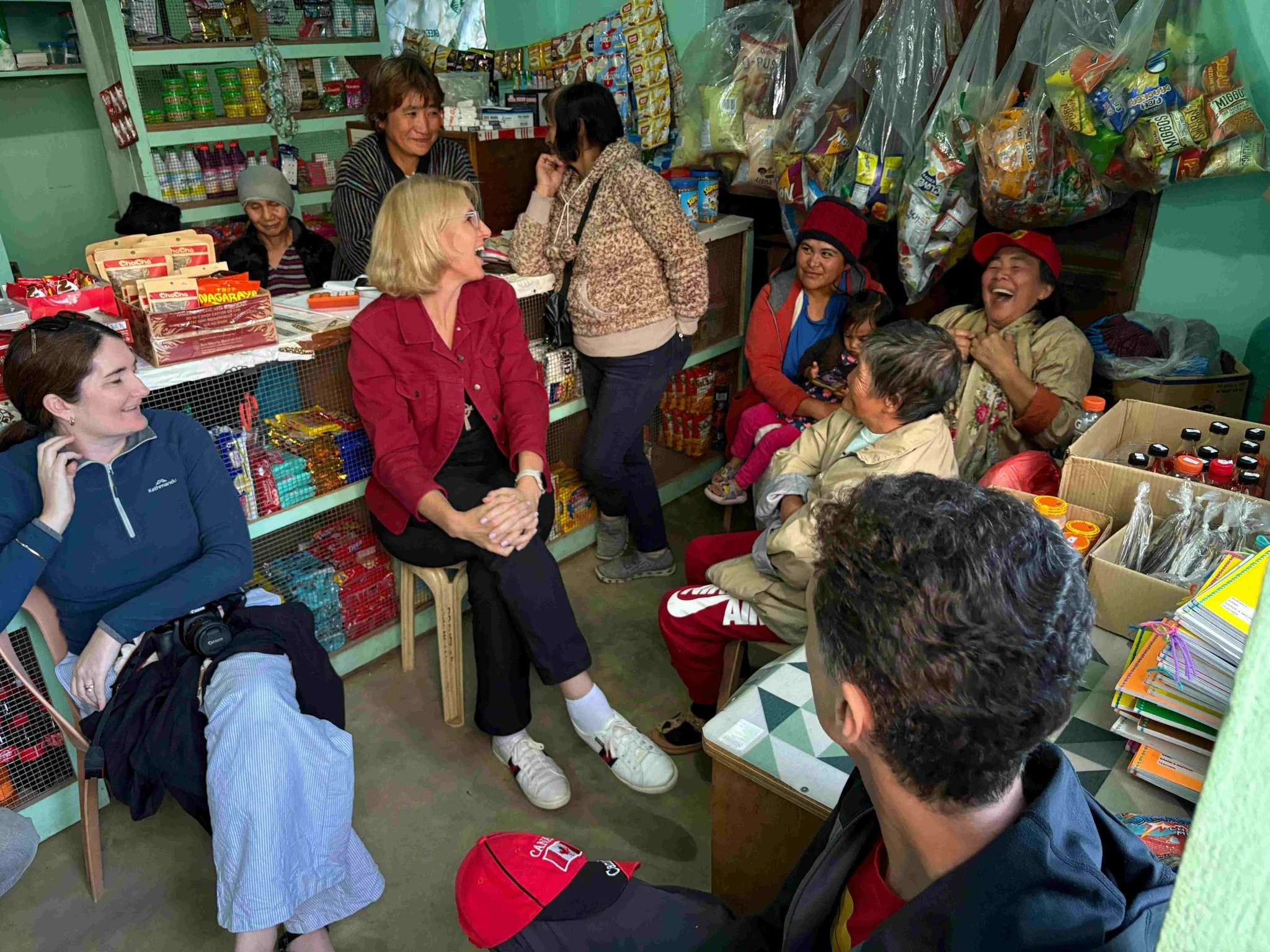
The co-operative at Natubleng has grown from 13 to 63 members in ten years, and provides livelihood stability and community support for members and the local community. Rev’d Juliana and Bishop Sarah enjoyed a good laugh with members in their local store, which was built with the assistance of ABM © Anglican Focus.
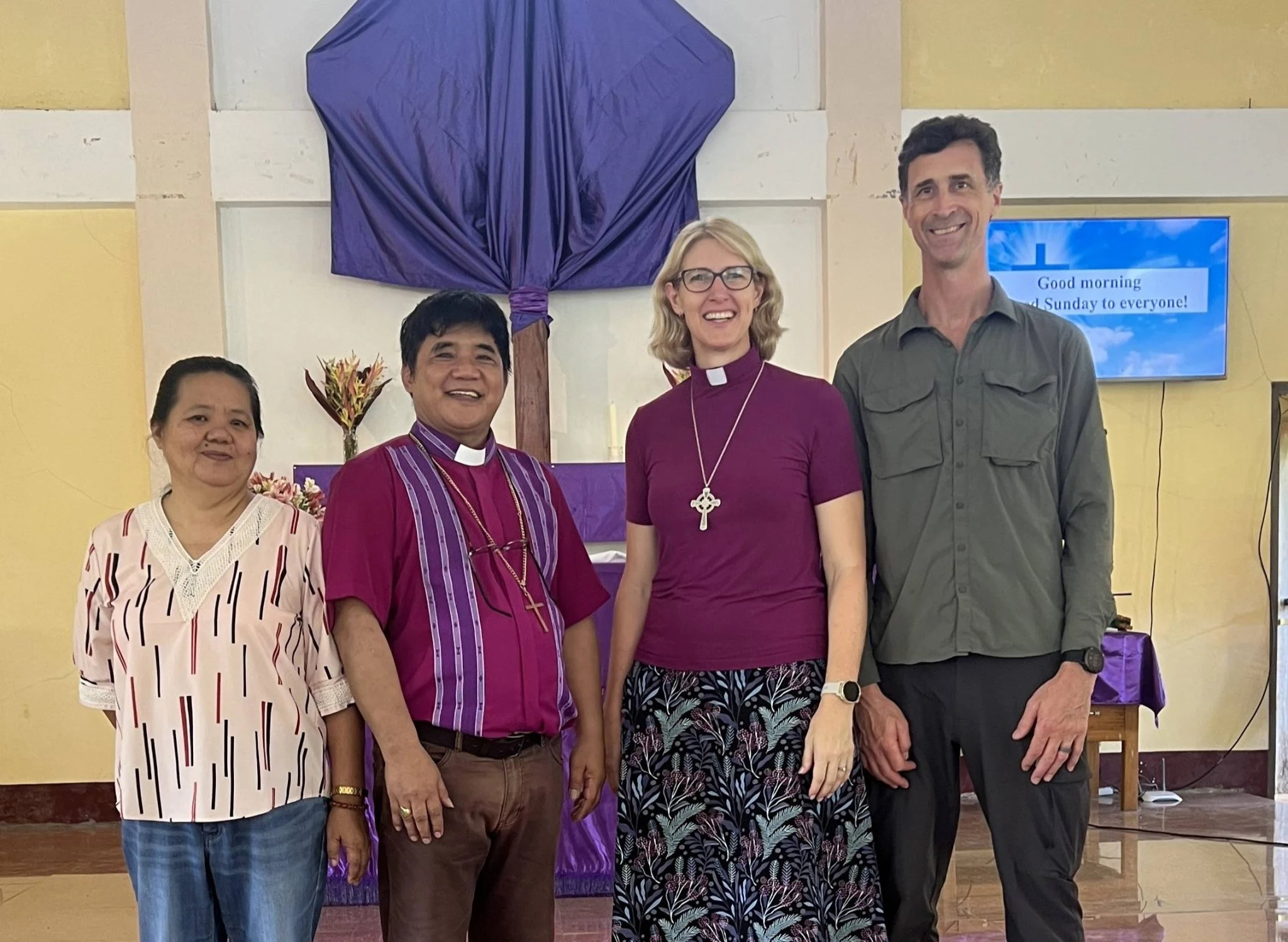
At St William’s parish in Benguit, Bishops Frenzel and Sarah and their spouses, Norma and Darius, enjoyed worship and fellowship together. The parish co-operative has 5000 members and runs a farm, aquaculture project, guest house and local swimming pool! © Anglican Focus.
